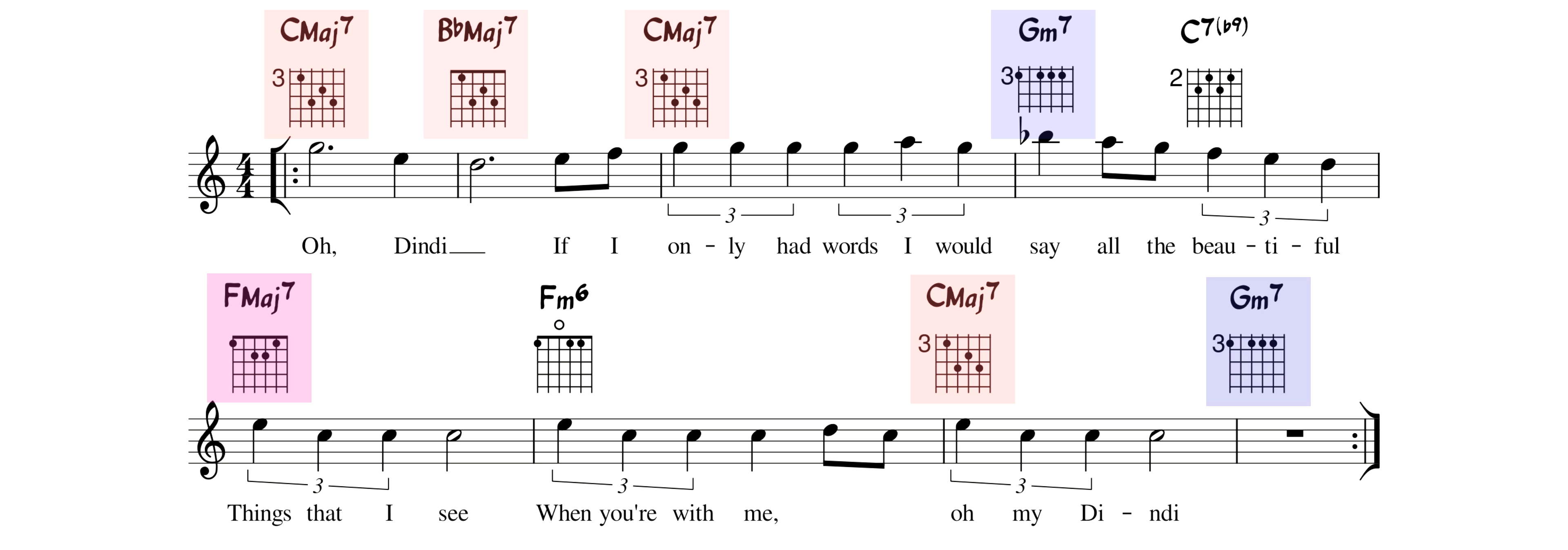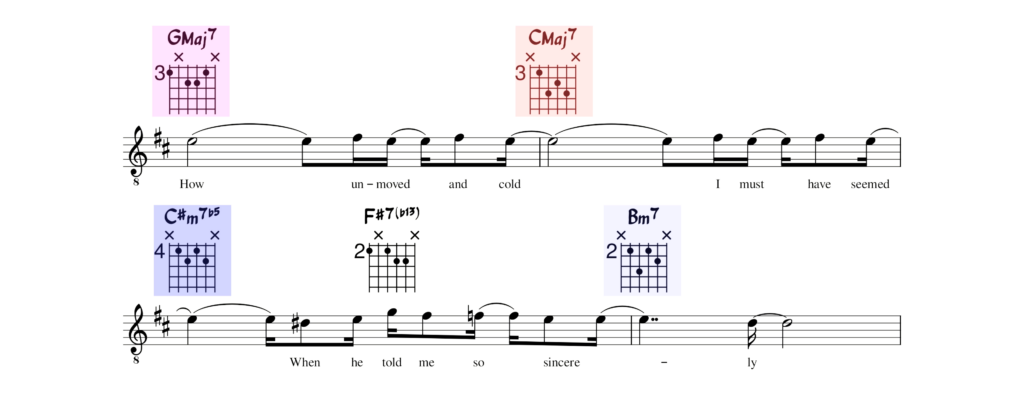After the basic chord forms in the first position were covered in the introduction to the bossa nova chords, the following lesson is about learning the basic four-note chords across the entire fretboard. In addition to internalizing these chord forms, a solid fingerboard orientation is necessary. This begins with locating the root tones of the chords on the low strings.
The Fretboard Theory
In order to be able to know your way around the fretboard, some music theory is essential. The following illustrates a C major scale, the tone sequence is: C D E F G A H C

The interval between these tones is not always the same. Between E and F as well as between B and C the interval is a semitone (illustrated by the dashed line). Between all other tones it is a whole tone. On the guitar, a semitone step corresponds to the distance of one fret, a whole step corresponds to two frets.
If you now look at the low E string, note that there is a semitone right between the open string and the first fret (E to F). The tones then follow in whole-tone steps until the next half-tone step is between B and C at the 7th fret. Also internalize the intervals on the low A-String!

Bossa Nova Chords Across the Fretboard
This prior knowledge is necessary in order to be able to apply the following chord diagrams to chord progressions.
As a reminder, there are 5 important types of seventh chords:
- a major triad with a major seventh (maj7)
- a major triad with a minor seventh (7)
- a minor triad with a minor seventh (m7)
- a diminished triad with a minor seventh (m7b5)
- a diminished triad with a diminished seventh (dim7)
While the basic chord fingerings from the first part can often only be used to easily realize Major7, Minor7 and Dominant7 four-tone chords, these chord fingerings create a complete scheme.
We sort the 5 chord types according to the position of the root notes, starting with the low E string.
The 5 Chords e-String

The 5 Chords A-String

The 5 Chords D-String

BOSSA NOVA AKKORDE Examples & Application
The next step is to apply these four-note sounds to bossa nova songs. In this video you will find some of the previous content illustated as well as the examples that follow below.
Beispiel #1 - Dindi
Dindi is a bossa nova song by Brazilian composer Antonio Carlos Jobim . In contrast to many of his pieces, the song has a very short and clear form and is therefore very suitable for a simple guitar arrangement. Here are the first eight bars in the key of C major.

The four-note chords can be used particularly well in the first part. Three of the five different chord types are four-note chords with the root note on the E or A string,
Beispiel #2 - Insensatez
How Insensitive (original: “Insensatez”) is one of Tom Jobim’s most beautiful ballads. There are many good recordings of this song but Joao Gilberto’s version in the key of B minor is very suitable for working on the guitar chords. Here is an example of bars 5-8:

In addition to the Major7 chords that you have already seen in Dindi, there is also a half-diminished and a minor 7th chord with the root note on the A-string.
In the following PDF you will find the guitar chord diagrams to the four-note chords as well as the examples discussed above and other well-known Bossa Nova songs!